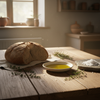Lemon Grater and Zester for Fresh Citrus: Pro Guide
Key Takeaways
- Fresh citrus zest enhances dishes by adding intense flavor and aroma.
- A quality lemon grater and zester unlocks up to 80% of the fruit's flavor compounds.
- The aromatic oils in citrus zest dissipate within 30 minutes of exposure to air.
- Using the right zesting tool can elevate your cooking from good to unforgettable.
Table of Contents
- Why Every Home Chef Needs a Lemon Grater and Zester for Fresh Citrus
- Lemon Grater vs. Lemon Zester: What's the Difference and When to Use Each
- How to Zest Lemon Like a Pro: Step-By-Step Instructions
- Best Lemon Grater and Zester Tools on the Market
- Anatomy of Citrus: Zest, Pith, and Peel Explained
- Troubleshooting Citrus Zesting: Common Problems and Expert Fixes
- Cleaning and Maintaining Your Lemon Grater and Zester
- Zesting Beyond Lemons: Tips for Limes, Oranges, and Grapefruits
- Creative Culinary Uses for Lemon Zest and Grated Citrus
- Storage, Freezing, and Preservation of Fresh Zest
- DI ORO Difference: Healthy, Award-Winning Zesting for Real Kitchens
The Ultimate Guide to Lemon Graters and Zesters for Fresh Citrus
Fresh citrus zest transforms ordinary dishes into extraordinary culinary experiences. A quality lemon grater and zester for fresh citrus unlocks aromatic oils that contain up to 80% of the fruit's flavor compounds, oils that disappear within 30 minutes of exposure to air. Whether you're perfecting a soufflé or elevating your holiday roast, the right zesting tool makes the difference between good and unforgettable.
DI ORO's award-winning kitchen tools bring professional-grade precision to home kitchens, with forever-chemical-free construction that keeps your culinary creations as clean as your conscience.
If you're looking to expand your kitchen toolkit, consider adding a hand cheese grater for versatile grating tasks beyond citrus zesting.
Why Every Home Chef Needs a Lemon Grater and Zester for Fresh Citrus
Citrus zest isn't just a garnish, it's a flavor powerhouse packed with essential oils, vitamin C, and aromatic compounds that elevate everything from vinaigrettes to baked goods. The oils in lemon zest contain limonene, which provides that bright, clean citrus punch that dried seasonings simply can't match.
Lemon Grater vs. Lemon Zester: What's the Difference and When to Use Each

Understanding your zesting arsenal prevents kitchen frustration and delivers consistent results. A microplane zester creates fine, powdery zest perfect for baking, while traditional zesters produce thin strips ideal for cocktail garnishes. Box graters with small holes offer a middle ground but require more precision to avoid pith.
| Tool Type | Zest Texture | Best Use | Pith Avoidance |
|---|---|---|---|
| Microplane Zester | Fine, fluffy | Baking, sauces | Excellent |
| Channel Knife | Long strips | Cocktails, garnish | Good |
| Box Grater (small holes) | Medium pieces | General cooking | Moderate |
DI ORO's seamless construction eliminates the bacteria-trapping joints found in traditional tools, while the ergonomic design provides the control needed for precise zesting. The 18/10 stainless steel core won't bend under pressure, ensuring consistent results every time.
How to Zest Lemon Like a Pro: Step-By-Step Instructions
Proper technique prevents bitter pith contamination and maximizes oil extraction. Start with room-temperature citrus, cold fruit releases fewer oils, while overly warm fruit becomes mushy.
Microplane Method
- Hold the lemon zester at a 45-degree angle against the fruit.
- Apply gentle pressure and draw downward in short strokes.
- Rotate the lemon after each stroke to avoid white pith.
- Stop when you see white, that's your pith warning.
Pro Tip: One medium lemon takes approximately 2 minutes to zest completely and yields 1 tablespoon of fresh zest.
DI ORO's award-winning tools feature non-slip handles that maintain grip even with wet hands, while the seamless silicone construction ensures easy cleanup. The heat-resistant design means you can zest directly over hot pans without tool damage.
Best Lemon Grater and Zester Tools on the Market
DI ORO Seamless Series - Award-Winning Performance
Best for: Home chefs who demand professional results and health-first materials
America's Test Kitchen named DI ORO the "Most Versatile Silicone Spatula on the Market," and that same engineering excellence extends to their zesting tools. The seamless, forever-chemical-free construction eliminates bacteria harboring, while the 600°F heat resistance handles any kitchen task.
Why it stands out: LFGB certified, BPA-free construction with lifetime warranty. The 18/10 stainless steel core provides durability without flexibility loss.
Traditional Microplane - Sharp Precision
Best for: Fine zesting tasks and occasional use
Sharp etched blades create consistent fine zest, though the traditional design includes joints that can harbor bacteria over time.
OXO Box Grater - Multi-Purpose Option
Best for: Budget-conscious cooks needing multiple grating sizes
Versatile tool with various hole sizes, but requires more skill to avoid pith and lacks specialized zesting precision.
Anatomy of Citrus: Zest, Pith, and Peel Explained

Understanding citrus anatomy prevents bitter flavors and maximizes aromatic oil extraction. The colorful outer layer, zest, contains concentrated essential oils in microscopic pockets. This paper-thin layer, typically less than 1mm thick, holds the fruit's most potent flavors.
Beneath the zest lies the white pith, a spongy layer that tastes bitter and should be avoided. The innermost layer is the fruit itself. Professional chefs focus exclusively on the zest because it provides pure citrus essence without acidity or bitterness.
| Layer | Thickness | Flavor Profile | Best Use |
|---|---|---|---|
| Zest (Flavedo) | Less than 1mm | Bright, aromatic | Cooking, baking, garnish |
| Pith (Albedo) | 2-5mm | Bitter, astringent | Avoid in recipes |
| Fruit Segments | Varies | Sweet/tart, juicy | Eating, juicing |
Troubleshooting Citrus Zesting: Common Problems and Expert Fixes
Bitter zest results from pith contamination. Use lighter pressure and shorter strokes, rotating the fruit frequently. If your citrus zester produces large chunks instead of fine particles, the blade may be dull or you're applying excessive pressure.
Top 5 Zesting Issues and Quick Fixes
- Clogged grater holes: Rinse immediately after use or brush with soft bristles
- Uneven zest texture: Maintain consistent angle and pressure
- Tool slipping: Use non-slip cutting boards and proper grip
- Dull blades: Replace tools every 18-24 months for optimal performance
- Wasted fruit: Zest before juicing to maximize yield
DI ORO's seamless construction prevents clogging issues that plague traditional zesters with joints and crevices. The ergonomic design reduces hand fatigue during extended zesting sessions, while the lifetime warranty ensures consistent performance.
For more tips on choosing and using the right tool, check out this guide on the zester tool.
Cleaning and Maintaining Your Lemon Grater and Zester
Proper maintenance extends tool life and prevents bacterial growth. DI ORO's seamless design eliminates the bacteria-harboring joints found in traditional tools, making cleanup effortless and hygienic.
Rinse immediately after use with warm water, using a soft brush to remove zest particles. The dishwasher-safe construction withstands temperatures up to 600°F, ensuring thorough sanitization. Avoid abrasive cleaners or steel wool that can damage cutting surfaces.
DI ORO Advantage: LFGB certified, forever-chemical-free construction means no harmful compounds leach into your food. The lifetime warranty covers any performance issues, simply contact customer service for replacement.
Inspect tools regularly for wear or damage. Sharp, well-maintained zesters require less pressure and produce better results. Store in a dry location to prevent rust on metal components.
For more information on the science and safety of zesting, see this external resource on zest preparation and storage.
Zesting Beyond Lemons: Tips for Limes, Oranges, and Grapefruits

Each citrus variety requires slight technique adjustments. Limes have thinner skin and yield approximately 2 teaspoons of zest per fruit, use gentler pressure to avoid pith. Orange zest offers sweeter, more mellow flavors perfect for baked goods, while grapefruit provides bold, slightly bitter notes ideal for cocktails.
Larger fruits like grapefruits have thicker skin, allowing for more aggressive zesting. The key is adjusting pressure based on skin thickness while maintaining the same light, consistent strokes that avoid the white pith layer.
| Citrus Type | Zest Yield | Flavor Profile | Best Applications |
|---|---|---|---|
| Lemon | 1 tablespoon | Bright, clean | Baking, sauces, marinades |
| Lime | 2 teaspoons | Sharp, tropical | Thai cuisine, cocktails |
| Orange | 1.5 tablespoons | Sweet, mellow | Desserts, glazes |
| Grapefruit | 2 tablespoons | Bold, slightly bitter | Salads, cocktails |
For more creative uses of citrus zest, explore our article on lemon zester tool ideas and applications.
Creative Culinary Uses for Lemon Zest and Grated Citrus
Fresh zest elevates dishes beyond traditional applications. Add half a teaspoon to vinaigrettes for brightness, or incorporate into compound butter for instant flavor enhancement. Bakers know that lemon grater and zester for fresh citrus tools create the fine texture needed for even distribution in batters and doughs.
Cocktail applications extend beyond garnish, rim glasses with fine zest mixed with sugar, or create aromatic oils by expressing zest over drinks. The volatile oils create visual drama and intense aroma that enhances the drinking experience.
Pro Applications
- Finishing salts: Mix zest with coarse salt for seafood and vegetables
- Infused sugars: Combine with granulated sugar for baking projects
Storage, Freezing, and Preservation of Fresh Zest
Fresh zest loses potency within 30 minutes of grating, making immediate use ideal. For longer storage, freeze measured portions in ice cube trays with a small amount of water or oil. These "zest cubes" maintain flavor intensity for up to six months and provide convenient recipe portions.
Air-drying creates shelf-stable zest that lasts up to 24 months when stored in airtight containers away from light. Spread fresh zest on parchment paper for 24-48 hours until completely dry, then transfer to sealed jars.
| Storage Method | Duration | Flavor Retention | Best Applications |
|---|---|---|---|
| Fresh (refrigerated) | 1-2 days | 100% | Immediate cooking, garnish |
| Frozen portions | 6 months | 85-90% | Baking, marinades |
| Air-dried | 24 months | 70-80% | Spice blends, teas |
| Sugar/salt preserved | 2 years | 75-85% | Finishing salts, desserts |
Create citrus sugar by combining fresh zest with granulated sugar in a 1:4 ratio. The natural oils infuse the sugar, creating an aromatic ingredient perfect for baking and beverage rimming.
For more on seamless food handling, see our article on seamless spatulas for smooth food handling.
DI ORO Difference: Healthy, Award-Winning Zesting for Real Kitchens

Award recognition from America's Test Kitchen and Food Network validates DI ORO's commitment to professional-grade performance. The seamless construction eliminates the bacterial growth points found in traditional tools, while forever-chemical-free materials ensure nothing harmful touches your food.
"The DI ORO Seamless Series represents the most versatile silicone spatula on the market, combining durability with health-conscious design that serious home chefs demand." - America's Test Kitchen Equipment Review
The lifetime warranty reflects confidence in construction quality, if any DI ORO tool breaks or fails to perform, replacement is guaranteed. This commitment removes risk from your investment in premium kitchen tools.
LFGB certification exceeds FDA standards, ensuring materials meet European Union's stricter safety requirements. The 600°F heat resistance and dishwasher-safe construction provide versatility that extends far beyond zesting applications.
For home chefs who refuse to compromise on quality or health, DI ORO delivers the performance and peace of mind that transforms cooking from chore to creative expression. Every citrus zester session becomes an opportunity to add professional-grade flavor to your culinary creations.
To learn more about the history and uses of zesters, visit the Wikipedia page on zesters.
For those seeking a comprehensive spatula set, the 3-piece seamless spatula set is an excellent addition to any kitchen.
Frequently Asked Questions
What is the difference between a lemon grater and a lemon zester, and when should I use each tool?
A lemon zester creates thin, long strips of zest perfect for garnishes and cocktails, while a lemon grater produces finer, powdery zest ideal for baking and sauces. Use a zester when you want visually appealing strips and a grater when you need zest to blend seamlessly into your dish.
How can I zest a lemon properly to avoid the bitter pith and maximize flavor?
To avoid the bitter white pith, gently grate only the colorful outer layer of the lemon’s skin using light pressure. Rotate the lemon as you zest to evenly remove just the aromatic zest, preserving the essential oils that pack the most flavor.
Why is it important to use a quality lemon grater and zester for fresh citrus?
A quality lemon grater and zester efficiently extracts up to 80% of the fruit’s flavorful oils without including bitter pith, preserving the bright aroma and taste. Using the right tool ensures your dishes are elevated from good to unforgettable with maximum freshness and intensity.
How should I store or preserve fresh citrus zest to maintain its flavor and aroma?
Fresh citrus zest should be used within 30 minutes for peak aroma, but if you need to store it, keep it in an airtight container in the refrigerator for up to a day or freeze it in small portions to lock in flavor for longer use.



